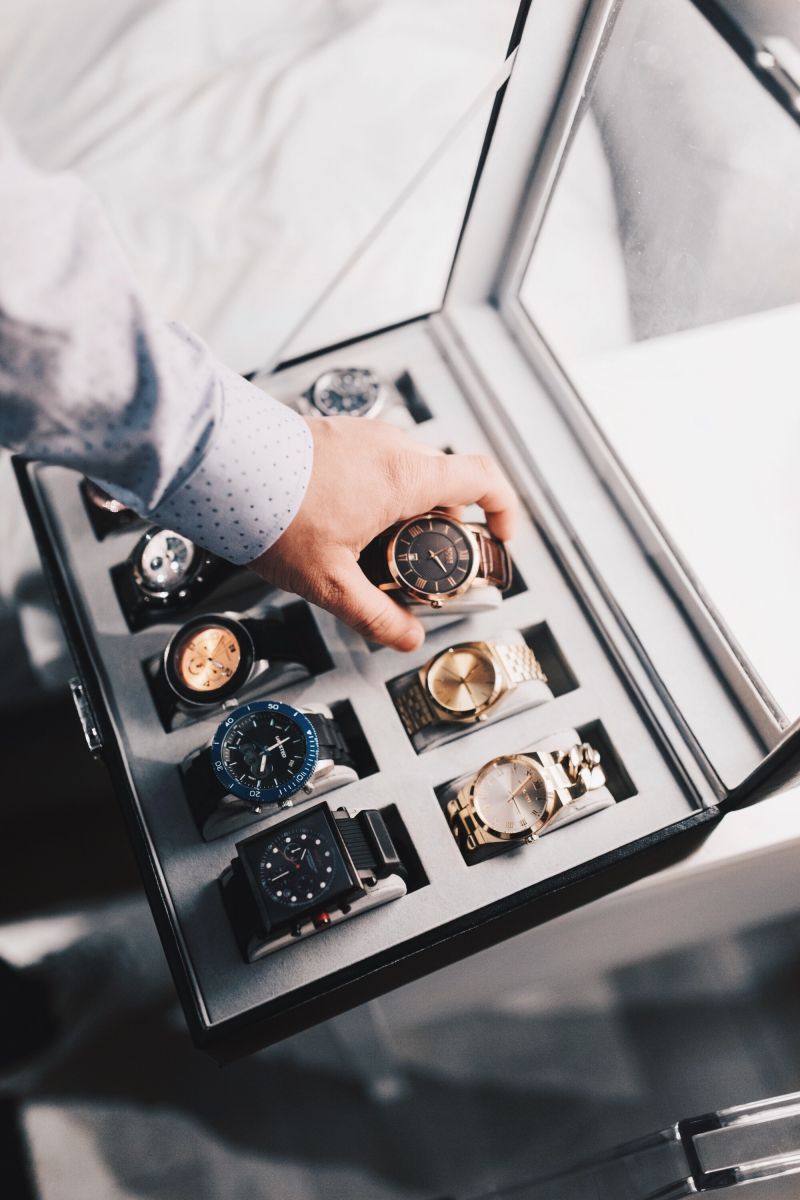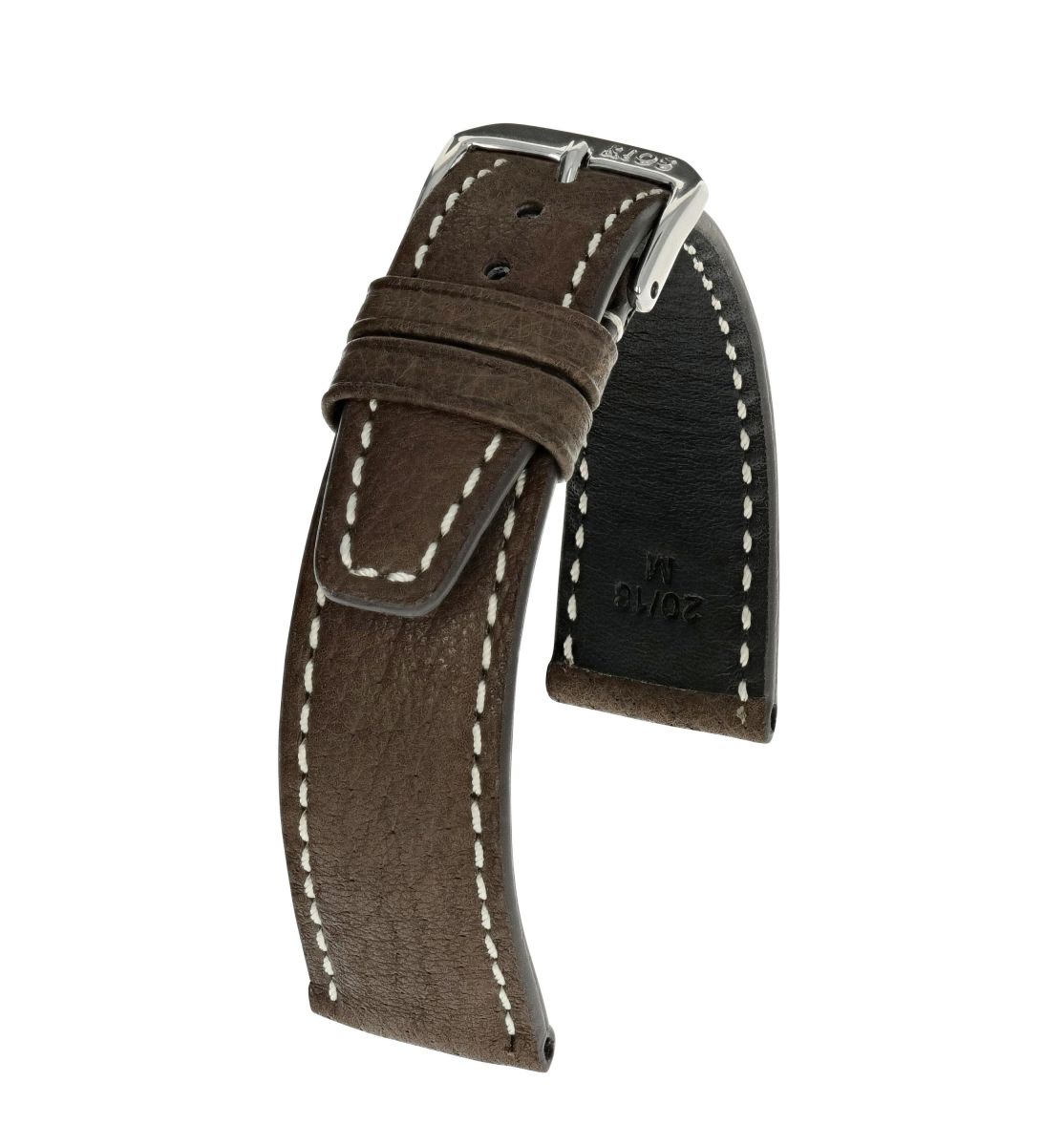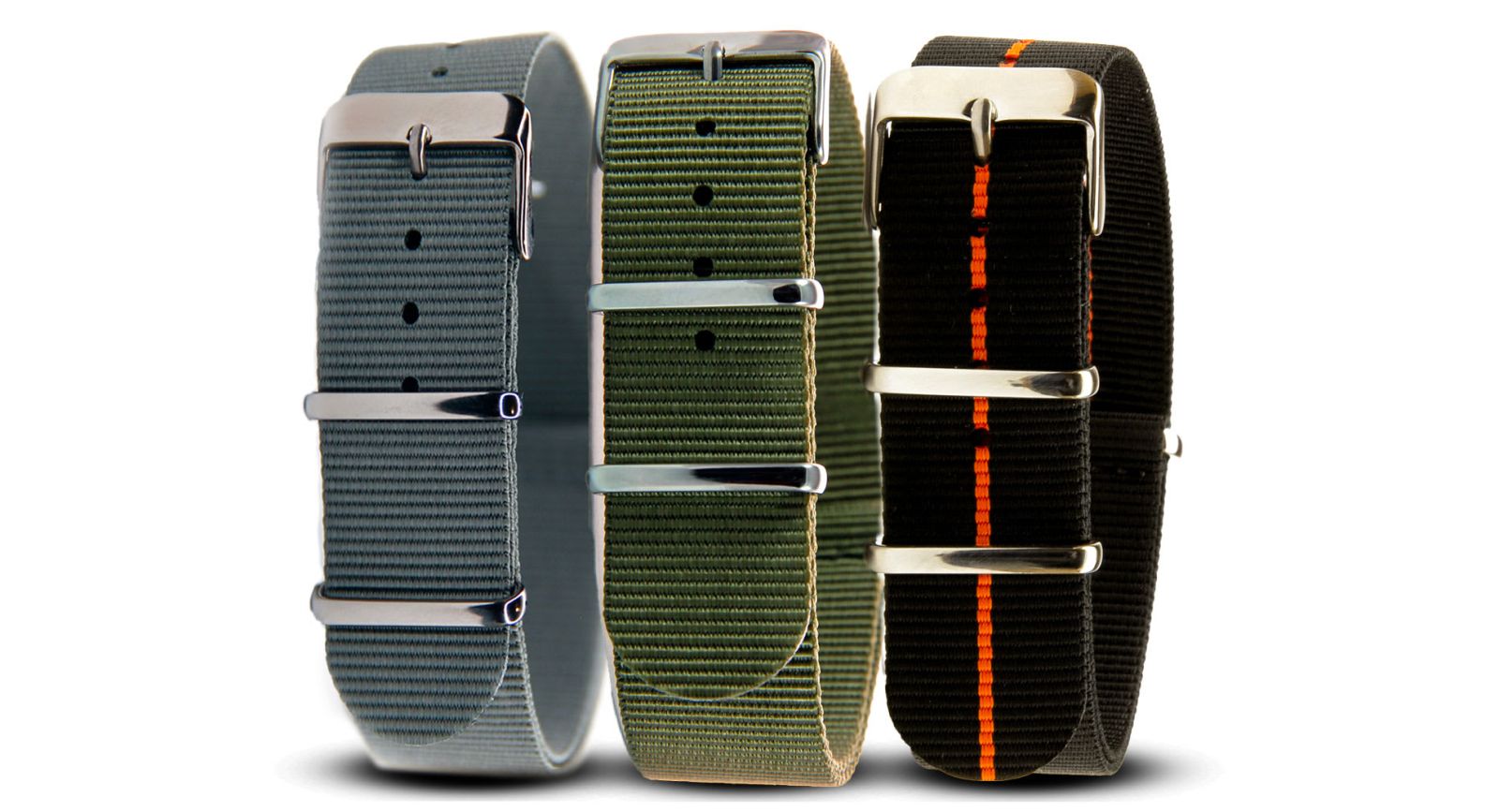Loving Your Watch Strap: Essential Maintenance Tips

You take pride in your watches and never miss a beat. You take the time to keep it clean and functioning, but one area you may overlook is your watch strap. Your watch band is not just a utilitarian tool but an important part of your watch’s look and style, and thus it deserves the same attention as the other components of your timepiece.
But, with the hundreds of straps out there, it can be difficult to know what the proper cleaning tools and methods are. And if you don't know how to properly clean your watch strap, you could end up causing more harm than good.
That's why I’ve put together this guide on how to clean your watch strap properly. We'll cover everything from what kind of cleaning tools to use, how often you should do it, what to avoid when cleaning your strap, gentle techniques for safely and effectively cleaning your watch strap, plus when it's best to ask a professional cleaner for help and how to tell when it's time for a replacement. So read on—it's time to get your watch glistening like new again!
Caring for Your Leather Watch Strap

Leather watch straps are a classic for any watch style, whether your look is traditional or modern. It comes in a variety of colors and textures—and keeping them looking and feeling good is essential to maintain your watch’s aesthetic. But how do you ensure that your leather strap stays in top condition? To ensure you're taking proper care of your leather strap, here are some key tips:
- Clean it regularly: One of the most important aspects of leather strap maintenance is regular cleaning. However, it is imperative that this is done with care and attention to detail. Using a damp cloth, it is essential to gently wipe away any dirt or grime without rubbing it too hard. For suede or nubuck straps, a suede brush or suede eraser may be required. Conditioning the material with natural products like beeswax and coconut oil is also crucial to keep it supple and prevent cracking.
- Condition it: When it comes to conditioning, there are different approaches to take depending on the type of leather. Smooth-grain leather straps can benefit from a minimal amount of water and gentle soap, but suede or nubuck straps should not be treated in this way. It is important to let the strap dry completely before moving on to the conditioning step.
- Let it breathe: Another important consideration when caring for your leather strap is to ensure that it is stored in a cool, dry place where air can circulate freely around it. It is worth noting that some leather conditioners or oils can darken the color of the leather, so it is important to choose a product that is appropriate for your strap. Allen Edmonds Leather Lotion is a popular choice for its moisturizing properties, while heavier treatments like mink oil should be avoided as they tend to darken leather.
Pro tip: It is recommended to rotate your watch straps frequently to minimize wear and tear. Just like leather shoes, they need to be given a chance to rest between uses. Also, try to avoid exposing your strap to water as much as possible, and always remove it before showering or swimming. With a little care and attention, you can ensure that your leather watch strap remains in top condition and your watch maintains its timeless appeal.
Keeping Your Metal Watch Strap Scratch-Free

Metal watch straps, while durable, are susceptible to scratching and wear over time. As such, it is crucial to maintain and care for them to keep them looking new. Cleaning the strap regularly is the first step in protecting it from debris. Avoid using abrasive cleaners and instead use a damp cloth with mild detergent to clean it thoroughly.
To safeguard the metal watch strap from scratches, you can use a clear nail polish coating. Apply it in small dabs over the link surfaces with a soft cloth for added protection against everyday wear and tear. However, if you are not keen on using nail polish, there are protective sprays designed explicitly for metals such as stainless steel and brass that you can use.
Metal watch bracelets are durable, easy to wear, and visually appealing. These straps are commonly made from stainless steel, titanium, or precious metals, and checking their components regularly is vital. Multiple components make up the band, allowing for flexibility, but this can cause the band to become loose over time. Ensure that the pins or screws holding the band together remain securely in place, as losing either one of these small parts can render the band unusable.
It is essential to note that 316L stainless steel is commonly used in watch bands due to its high resistance to corrosion. However, even with its superior corrosion resistance, it is still susceptible to corrosion. Exposure to seawater without proper cleaning after use can cause erosion to occur, resulting in pitting and crevice corrosion on metal surfaces. After exposure to seawater, rinse the metal watch band with fresh water to help prevent corrosion.
While metal watch straps are generally resistant to impact and corrosion, it is advisable to avoid subjecting them to collisions or other types of impact, as this can cause damage to the strap or even wrist injury. Additionally, sweating causes initial gray stains on the strap that can be removed through thorough cleaning. Avoid exposing the strap to corrosive liquids, as this can cause significant damage.
Cleaning a metal watch band can be challenging due to its numerous components, but ultrasonic cleaning provides a straightforward and effective solution. To clean the band, disassemble it and separate the watch case from the bracelet. Do not immerse the entire watch body in an ultrasonic cleaner as it could disrupt the balance spring's frequency and cause the sealed case to leak. Use your preferred cleaning solution or light soap water to clean the bracelet, following the liquid cleanser manual's instructions. Rinse the bracelet thoroughly after cleaning to ensure that all residues are removed. For the watch body itself, use a fresh rag, soap, and water to wipe the outside of the watch face and glass separately.
By following these guidelines, you can maintain and care for your metal watch strap, ensuring that it remains in top condition for years to come. Professional maintenance and care may be necessary for metal watch straps that have experienced significant wear and tear.
The Versatile NATO Strap: Wear and Care

NATOs, oh how versatile and reliable they are! These straps are a prime example of just how easy it is to swap out one watch band for another—no tools required. With a variety of colors and styles to choose from, they're perfect for any fashion-forward individual looking to stay on top of their game.
But be warned, these straps are not impervious to the elements. In fact, they thrive in the face of water, sweat, and the great outdoors. However, all of this exposure can lead to a stinky and stained NATO. That's why cleaning is an absolute must.
- To begin the cleaning process, prep the strap with a clean towel or soft brush to ensure there's no crud left on the surface of the strap. In a dish suitable for its size, mix a gentle soap (dish soap works wonders) with warm water and submerge the strap for a few minutes. But be careful not to use hot water as intense heat can and will affect the nylon material (which is also why it's not recommended to use your dishwasher).
- Once soaked, gently rub the strap between your fingers to work the soap into the fabric. Rinse thoroughly under running water and roll the strap in a hand towel, compressing it to remove as much water as possible. Then hang the strap to dry (preferably not in direct sunlight). If, after cleaning and drying, you find any frayed bits of nylon, use the heat (not the direct flame) from a lighter to ever so lightly melt away the fray and seal up the edge of the strap.
Pro tip: Want a more automated option? Put your nylon straps in a wash bag (or even a spare sock) and toss them in with the rest of your cold water laundry. But remember, heat is the enemy, so don't put your nylon straps in the dryer. After removing them from the wash, follow steps 6 and 7 above. You can also combine the two options and soak your dirty NATOs in ice water with a strong detergent before moving on to rinsing and drying.
It's essential to keep your NATO strap clean regularly, especially if you're an active person who's always on the move. Simply wash it with mild detergent, rinse it with lukewarm water, then leave it to air dry in a well-ventilated area away from direct sunlight. Avoid machine-washing or submerging the strap in water to prevent discoloration and weakening of the fibers.
Remember, just like leather straps, nylon straps are prone to wear and tear over time due to exposure. Humidity can cause discoloration, and exposure to sunlight weakens the fibers in the strap material, affecting its longevity. So be mindful of how you expose your NATO strap on hot days and avoid sunbathing with your watch.
With proper wear and care, your NATO strap can endure even the toughest conditions, allowing you to go on adventures without fear of compromising its stylish good looks or outstanding durability!
Rubber Watch Straps: Flexible and Low Maintenance
.jpg)
Rubber watch straps are a perplexing and bursty option for those seeking a flexible and low-maintenance watch strap. These straps require virtually no effort to maintain and are ideal for individuals who desire an effortless-to-manage strap!
- To keep the rubber strap looking fantastic, you simply need to rinse it under warm running water, apply a soft hand soap (dish soap is acceptable), rinse away any excess soap, and allow the strap to dry. However, it's critical to avoid direct sunlight, as UV rays can be harsh on rubber materials.
- From cleaning your watch and bracelet to any of your numerous other straps, I offer the aforementioned instructions as nothing more than a hopefully helpful guide to safeguard your beloved straps from a shortened and overly-sweaty life on your wrist. After all, if you're going to invest good money in fantastic straps, you may as well treat them well by keeping them clean and ready to wear.
Pros: One of the biggest advantages of rubber watch straps is how comfortable they are. They’re designed for maximum flexibility, making them the perfect choice for activities such as swimming, running, or strenuous physical activity. And, because rubber is naturally waterproof and resistant to dirt, you don’t have to worry about your watch getting wet or dirty.
Cons: Unfortunately, rubber watch straps do have a few cons. They can easily be scratched by sharp objects, which means that if you wear your watch outdoors a lot, it can quickly become damaged. Additionally, some people may not find them as esthetically pleasing as other materials like leather or steel watches. If that's the case for you, consider trying out another type of material!
When choosing a rubber watch strap, be sure to choose one that fits your personality and lifestyle—this will ensure you get years of enjoyment out of your watch strap! Also make sure that it is made from high-quality materials and has been well-constructed so that it can cope with daily wear and tear without any problems.
Finally—and most importantly—regularly check your rubber watch strap for signs of wear and tear – if you catch any issues early on, you can prevent them from getting worse in the future!
If you're not sure, you can always consult with the manufacturer of your rubber strap to see if there are any specialized cleaning needs.
Exotic Skin Watch Straps: Special Care Required

Exotic skin watches straps, like alligator, crocodile, and ostrich leather, require special care. It can be hard to know exactly how to take care of them since they're not your everyday watch straps.
But don't worry—a few simple maintenance steps can help extend their life and keep them looking their best.
- Cleaning
Exotic skin watch straps need to be cleaned periodically to remove dirt and oils that can compromise their strength and wear away the leather. Start by using a soft cloth or brush to remove any dirt particles. If you need something stronger for more intense dirt buildup, go for a mild soap solution, but make sure it does not contain any harsh chemicals or abrasives as this will lead to damage. After cleaning, dry the strap with a soft cloth or brush to further clean it up.
- Conditioning
Conditioning is essential for keeping your exotic-skin watch strap looking its richest and most luxurious. Use a quality leather conditioner (preferably one made especially for exotic-skin products) and apply it over the entire length of the strap several times per year in order to keep its texture smooth, flexible, and resistant. Be careful not to overdo it—you don’t want your exotic skin strapped looking slimy!
- Avoiding water
To extend the life of your exotic skin watch strap further, try avoiding water whenever possible — both saltwater and freshwater — as they can hasten the degrading of the leather's integrity over time. To do this more easily, use a polishing agent that you can apply directly on the leather every now and then in order to create an extra barrier against water damage
- Avoid Water Damage and Other Strap Saboteurs
Water isn’t the only thing that can damage your watch strap. You should also avoid excessive humidity, salt water, solvents, acidic substances, and extreme temperature changes. These things can all cause materials to decay over time.
So what are some other saboteurs to watch out for?
- Harsh cleansers or solvents can damage the surface of a watch strap and cause staining or discoloration.
- Prolonged exposure to sun and heat can cause discoloration in metal watch straps and dry-out leather straps.
- Incorrect storage of a metal watch strap that leaves it open to moisture or drastic temperature swings can cause wear and tear over time due to corrosion or rusting.
- Rubbing metal links against metal surfaces like jewelry boxes or other items during storage is another big no-no, as this will scratch the material of the watch strap.
Conclusion
Taking proper care of your watch strap is an important part of maintaining your timepiece, and the steps to do so are relatively easy! Whether you have a leather, steel, NATO/nylon, or rubber strap, there are simple maintenance tips you can use to keep your watch looking and feeling great for years to come.
Simple regular cleaning and conditioning of your watch straps help protect the materials and extend their usable lifetime while taking good care of your straps keeps your whole watch looking its best for longer.
Maintaining your straps properly helps protect them from wear and tear. Different materials require specific care, from gentle soaps for leather to avoiding heat for nylon. These tips might seem like a headache, but it’s worth it in the long run if you want to maintain their good looks and functionality. So why not take a few minutes to give your watch straps some TLC today? Your future self will thank you for it.
Watch Straps Australia has a wide range of NATO straps for you to choose from. Shop the entire collection today to find the perfect strap for you.
Posted on 14 May 2023 by
